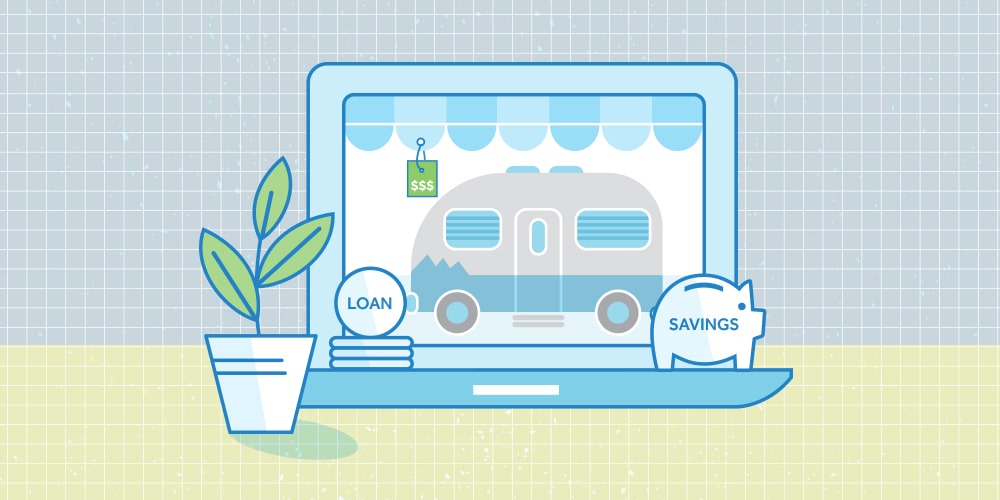The excitement of making a big purchase can provide a rush of anticipation, especially when it’s meant to fulfill a dream such as owning a house or renovating a kitchen. There’s a flip side, though, and that’s the dread of having to suddenly grab funds for an emergency such as replacing an appliance or scrambling to get a new vehicle.
As with almost anything that requires funding, there is no one-size-fits-all solution. Our own preferences play a big role, including our tolerance for risk when borrowing or saving, and what we learned about money growing up.
Every big purchase starts with a plan
Context is important when it comes to making your big purchase. When deciding whether to save or borrow, you want to ask if this is a planned or unplanned purchase.
If planned, you may have a lot of time to save beforehand. If it’s an emergency, you may have to borrow fast (this is where having an emergency fund on hand can be a game-changer). Either will affect your options in terms of how quickly and easily you can access funds in the most cost-effective way possible.
Regardless, you’ll need to decide how to fund the purchase and that leads you to consider whether to start saving, draw on existing savings or borrow, most likely using some kind of a loan.
When is it best to save or borrow?
Often, you can get a better deal if you pay with cash up front and that goes for both small and large purchases, depending on who is selling what. And if you’re prepared to pay with cash, you can usually expect to negotiate a better deal for yourself, whether it’s a reduced price, better terms or add-ons that other people might pay a premium on.
The bigger the spend, of course, most often the longer it takes to save up for it. Paying yourself first with automated savings is one strategy among several that you can consider as a way to reach your goals without borrowing.
On the other hand, taking on debt can be advantageous in certain circumstances. Buying a home has been a reliable investment for most people, regardless of what stage they are at in their lives. It can appreciate at a rate that makes the loan more than worthwhile.
When you buy, say, a car, it’s usually a different story, especially when you buy it new. Sure, you get a warranty, and you will be less likely to dig into your pockets for repairs in the short term, but most vehicles start depreciating as soon as you drive them off the lot.
If you already have savings on hand, you may consider deploying that cash into various investment opportunities that could grow your money even as you take on the counterbalance of debt.
There are many ways to borrow including various means of revolving debt such as lines of credit. Borrowing can get you to where you want to go often more quickly than savings, which of course take time.
Whether you’re using savings or borrowing, you’ve got to know your cash flow and how much you can afford.
Examine your budget
Creating, calculating and maintain a budget is one of the most important steps in managing money, according to a PwC report on Canadian consumer insights. Budgeters are better at managing their monthly cash flow, less likely to spend more than their monthly income, and less likely to need to borrow for daily expenses, the report showed.
Before you get rolling on your big purchase, get a handle on the basics, including:
- how much money you already have
- how much you can save within your time target
- how much you can afford to borrow
- what you’re eligible to borrow and what loan product (credit card, personal loan, line of credit, home equity loan, etc.) works best for the situation
- how much debt you are carrying or plan to carry (ideally, you want at some point to be debt-free).
Only you can determine the value of your destination, whether it’s a house, a car, a trip, an appliance or something else, and weigh what works best to help you get there.
A young family’s time horizon and investment strategy (plans to sell the home later and get a better one) may be different from someone who has retired and is looking to find an aging-in-place home with no plans to move from it.
The takeaway is that context always matters and knowing what, why, and when you want to purchase something will help you to determine how, as you decide on your best course of action.
See our best saving and borrowing products Set a savings goal
The information contained in this article was obtained from sources believed to be reliable; however, we cannot guarantee that it is accurate or complete. This article is provided as a general source of information and should not be considered personal advice.


